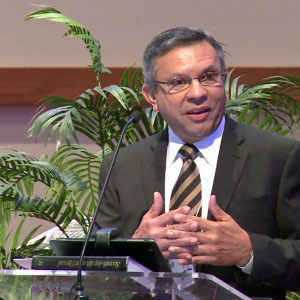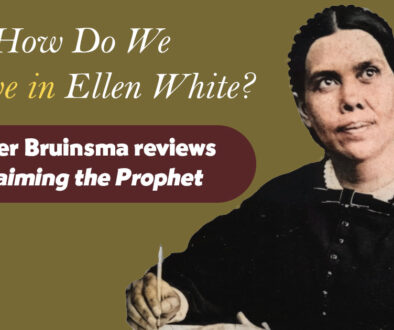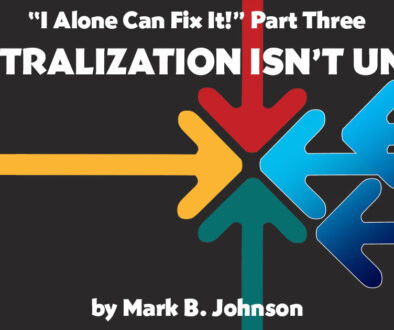Are Leaders Sometimes the Problem?
by Raj Attiken | 23 July 2021 |
Two churches I am very familiar with, each with its own junior academy, decided to merge their schools following long and serious consultations. To avoid the appearance of one school shutting down and sending its students to the other (which might have been perceived as a “win-lose” arrangement), they located the new, combined school in a leased building.
The combined school did well and had every reason for a bright future. Students, staff, and parents were all pleased with the new arrangement.
However, in a very short time things began to unravel. Because of anything happening at the school? Was it the teachers, the parents, or the students? None of those—they loved it. What was a successful operation fell apart because strong patriarchal leaders of each church couldn’t work with those of the other. An endeavor that was working well failed because leaders couldn’t lead.
Each church returned to operating its own school, neither of the schools retaining the energy, creativity or resources of the combined group.
Leadership fail
When a well-intentioned endeavor or promising new initiative fails, the question naturally arises, “What went wrong?” The answer too often implicates leaders as being responsible for the graveyard of promising initiatives or once-thriving efforts. It is expected of leaders that they contribute constructively to the success of an endeavor or the achieving of a ministry goal. We expect leaders to facilitate the accomplishment of initiatives, remove bureaucratic obstacles, and solve problems that impede progress. This, however, isn’t always the case.
- When those responsible to run things substitute authority for leadership, imagining that their preferences, perspectives, and personal biases constitute leadership wisdom, they are likely to be an obstacle to progress.
- When leaders lose sight of the goal of their leadership, they squander promising opportunities.
- When leaders differentiate themselves from those they lead by giving in to the “us-vs-them” impulse, they demoralize those doing the work.
- When the “win-lose” mentality nudges leaders to be overassertive with their own preferences and solutions, people feel devalued and marginalized.
- When leaders think of themselves as better or smarter than those they lead, they stop listening to the wisdom that’s available to them.
How leaders lead either stifles creative initiatives and inhibits people or empowers people and inspires creativity. Scholarly and popular books on leadership continue to find a wide and hungry audience. Universities offer courses and even have whole departments to study, teach, and encourage leadership. Over the years, a variety of theories and models of leadership have been proposed. Many of them predict the failure of top-down, hierarchical styles of leadership as we increasingly move into life as one interconnected web of relationships and information. In this environment, some qualities and practices will set church leaders apart from those who continue to rely on positional power or their official status.
Necessary Attributes
Discerning leaders have the ability to recognize what’s working well and what isn’t, especially when the particular initiative is one that was conceived and developed by others, perhaps in a congregation or school.
A pastoral family I know moved into an urban community somewhat untouched by the Adventist church’s ministry. Starting with hardly anything, they built a contextualized ministry that served the community. Their worship gatherings primarily attracted foot traffic and those who used public transportation. They became a resource for both spiritual ministry and for the physical needs of many who attended. Their ministry did not resemble ministry in most Adventist churches, but it was incarnational to a particular audience.
As conference administrations changed, the pastor was informed that support for his ministry was being withdrawn. “We are going in a different direction,” was how the change was communicated. The administrators did not recognize that the church’s ministry was meeting needs and serving people.
When people with vision and motivation launch ministries, their goals for their efforts may not always align with those of leaders. Effective leaders recognize a good thing when they see it and lend their support to its advancement. They are very aware of how their actions could hinder or kill some growing ministry. They know the value of supporting and encouraging the pursuit of the group’s goals despite those goals being different than their own. To do otherwise could stymie potentially productive endeavors.
Letting people work
There are times when a congregation or a group may have a worthy vision for a ministry but has difficulty translating it into an implementable goal. In the absence of a clearly understood goal and a strategy to achieve it, a group could expend its energies in many efforts but fail to advance towards their dream. Being busy “chasing rabbits” could give the illusion of progress. Activity, even at a fevered pitch, doesn’t necessarily add value! An important service that a leader can provide to a group is to help them give expression to the goals for their ministry.
Effective leaders encourage those they lead. They see in others qualities and potential that could be cultivated and strengthened, and they invest in others through mentoring and counseling. The leaders who have added value to my life and ministry are those who were nurturers and cheerleaders. They seemed to know that the most effective forms of accountability are those that happen in the context of good relationships and not as expressions of authority and control.
From the earliest years of the church, Christianity has faced the reality of schisms and splits. When a congregation or a group embarks on a ministry, sometimes tensions develop that if left unaddressed could lead to disunity and splintering. A useful skill for church leaders is fostering unity and helping a group to stay united in its pursuit of a goal. By listening to divergent perspectives, by understanding different motivations, by recognizing deeply held values, a leader is able to help forge a unified goal.
Use and Abuse of Authority
Leadership roles usually come with a certain degree of authority. Leaders have to contend with the appropriate exercise of leadership authority. They live with the dual challenge of the potential overuse of leadership authority and in the failure to appropriately use authority to bring about positive change.
In the formative years of conferences there were good reasons for drawing conference boundary lines within certain geographical confines. Maintaining those boundaries decades after they lost their utility is a failure of leadership. In some parts of the North American Division up to three conferences overlap in their ministry territory. Churches that are just a few miles from each other are in different conferences. Members are not always sure which conference their church is affiliated with. If you are a member of one conference and wish to send your child to a school operated by another, you pay a higher tuition rate. Families switch their membership from church to church solely to benefit from lower tuition rates for their children. Churches unhappy with their conferences have been known to “defect” to another conference.
This conference border problem is, it seems to me, an example where leadership and organization actually gets in the way of smooth functioning, by dividing us rather than helping us work at a common goal. Denominational leaders seem unable or unwilling to exercise their authority to change now-obsolete territorial designations.
The most high-profile display of the misuse of leadership authority in recent years was in the matter of ordaining women to the gospel ministry. A good share of those on the frontlines of congregational life, those on the frontlines of ministry and many of the church’s recognized theologians regarded the ordination of women as the right thing to do.
But denominational leaders failed us in at least two ways. We witnessed those responsible for the governance practices and policies of the General Conference use their authority to steer the decision-making processes to achieve their preferred outcome. We also saw an overreach of authority when General Conference leaders attempted to usurp the delegated authority of other levels of the organization to make decisions about ordination keeping many qualified women from receiving full recognition of their calling and ministry. The misuse of authority, informed by shoddy theology in some cases, has kept many qualified women from receiving full recognition of their calling and ministry, and has led to the loss of morale among many. This attempt to impose a form of uniformity in the entire organization has resulted in conflict, division, discouragement, and discontent – all evidence of failing leadership practices.
Permission-giving
Leaders who empower people in meaningful ministry through permission-giving are an asset to any church organization. The incident recorded in Acts 15 provides for us a framework for leadership that has largely gone unnoticed by the church. When the apostles were faced with a ministry challenge in Antioch of Syria, they adopted a permission-giving approach: “For it seemed good to the Holy Spirit and to us,” they wrote, “to lay no greater burden on you than these few requirements.” (vs. 28, NLT).
Jim Collins, in his book Good to Great, advocated for something similar: “preserve the core and stimulate progress.” Permission-giving leaders focus on preserving the organization’s core values while empowering others to unrestricted creativity. Today we might apply the Acts 15 permission-giving principle with something like the following: “As long as you don’t engage in any activity that is immoral, illegal or anti-Christian, you should feel free to explore, create and pursue any ministry initiative you want. And as a leader, I’ll assist you all I can with wisdom, resources, encouragement and problem-solving.” While this might leave some befuddled and stymied, many will find this to be liberating, energizing, and motivating.
Permission-giving leaders wrestle with the question of how to give away as much authority as possible while preserving the core values and purposes of the church. They empower people, giving as much latitude as possible to their creativity and innovation. Such a paradigm engenders positive change, improvement, innovation, and renewal. Ministry initiatives are likely to emerge that fit various contexts, giftedness, and resources.
A permission-giving leadership paradigm aligns with the biblical notions of the “priesthood of all believers” and of the distribution of spiritual gifts. Our theology and ecclesiology inform us that God calls all to active discipleship and equips them with spiritual gifts for the work of ministry.
Genuine expertise
We have for too long operated under the paradigm that all wisdom resides in denominational offices. It is a paradigm that ignores the fact of the giftedness, expertise, professionalism, and creativity of those in our congregations and frontline ministries. Effective leaders create environments in which such people feel inspired to be creative and innovative.
The biggest opportunities and challenges facing the church today cannot be resolved through the application of authoritative expertise from some distant denominational office. In a culture of diminished control, the solutions to our collective challenges must come from many places, particularly from those in the frontlines of service. God has not chosen denominational leaders for the biggest visions! An essential role that denominational administrators can play is in cultivating a safe place for ministry innovators: where creativity and risk-taking are not only anticipated but rewarded, where failure is not vilified or disparaged. Risk and failure are both elements of processes that generate break-through solutions and practices.
The Seventh-day Adventist Church is blessed with many visionary, creative, gifted, skilled, and devoted members. They have much to offer the church in ministry and service. Effective leaders understand people’s motivations and enlist and empower them to marry their individual goals to those of the group. They engage these people to create true alignment toward a common vision and mission. The synergy that is created ignites a fire within people that unleashes their latent creativity and abilities to fulfill the mission.
The nature of leadership has undergone radical transformation. The church is best served today by leaders who understand the potential of what empowered people can accomplish for the church.
 Dr. Raj Attiken is an adjunct professor of religion at Kettering College, the Adventist higher education institution in Dayton, Ohio, and former president of the Ohio Conference.
Dr. Raj Attiken is an adjunct professor of religion at Kettering College, the Adventist higher education institution in Dayton, Ohio, and former president of the Ohio Conference.




